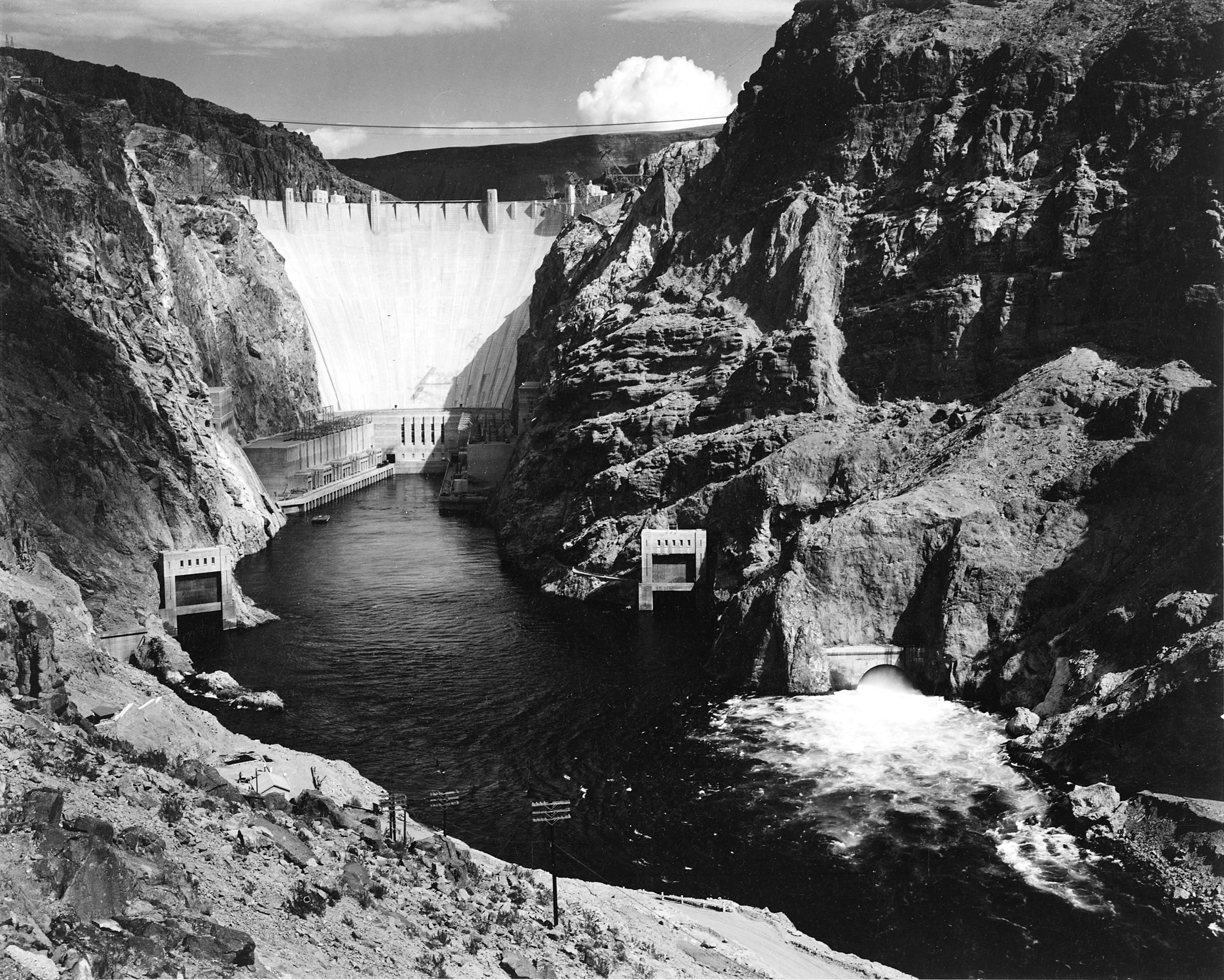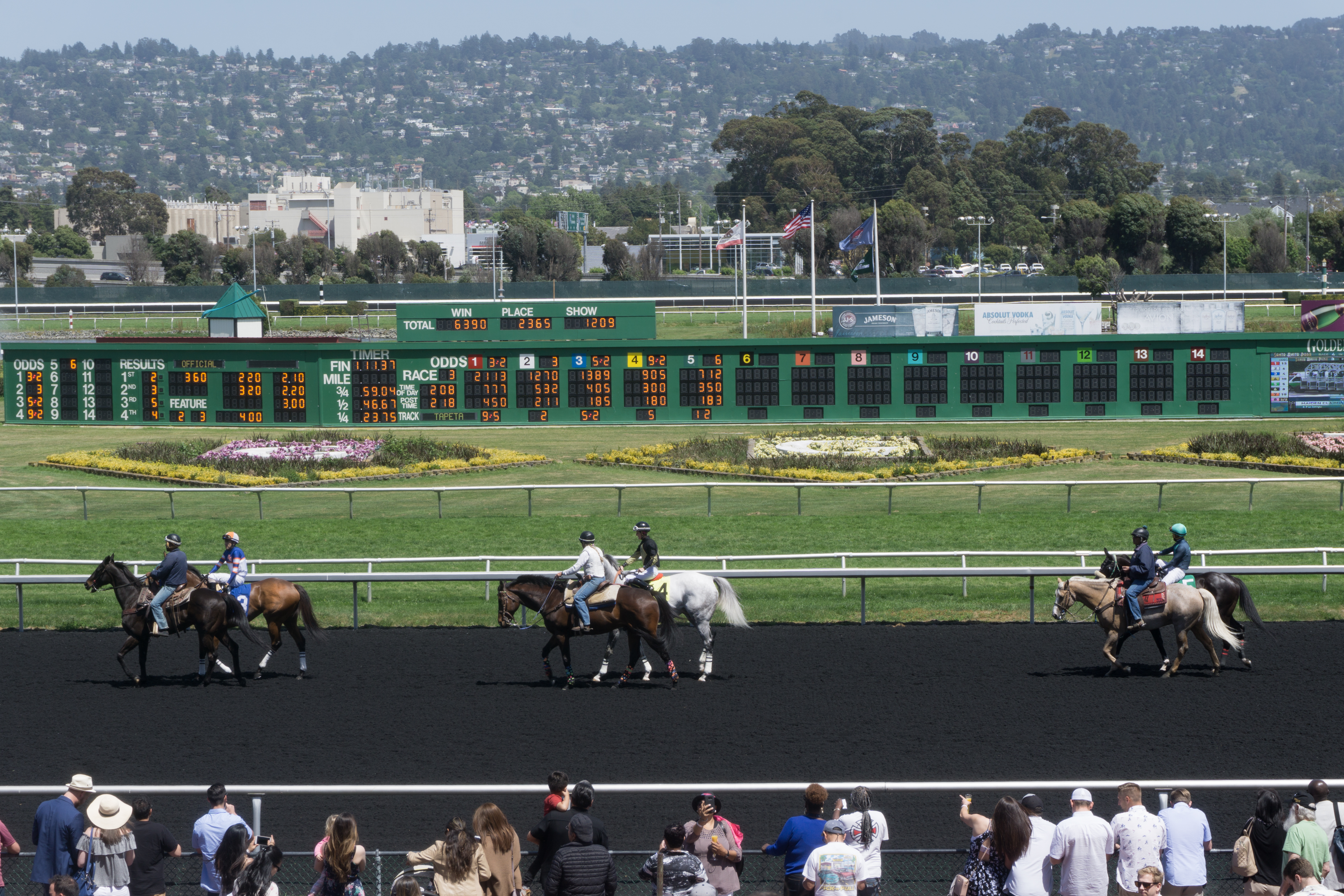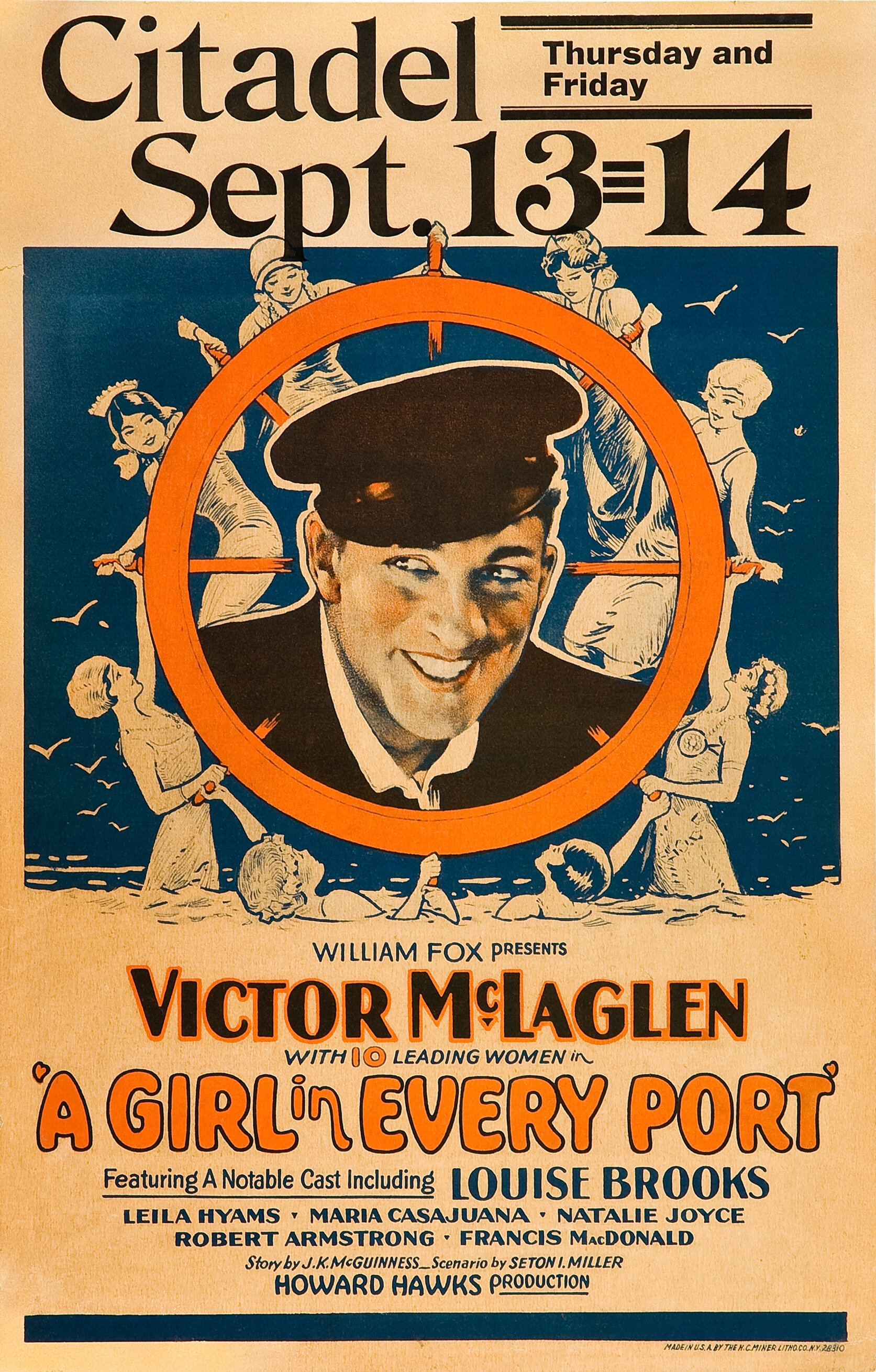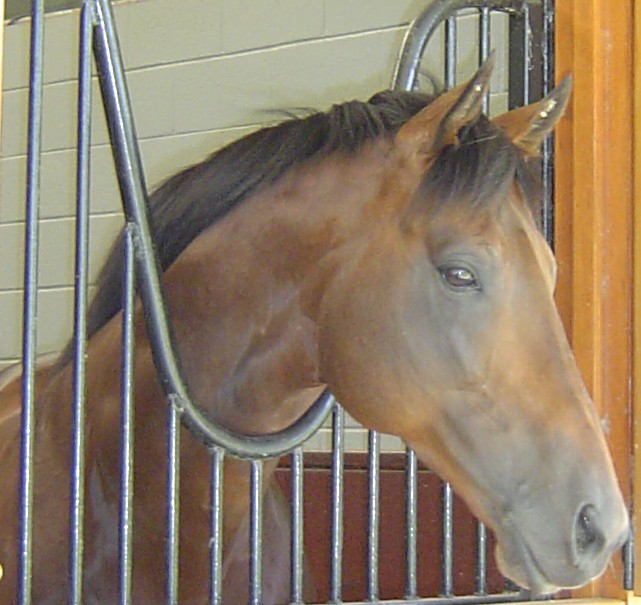|
Triplicate (horse)
Triplicate (foaled 1941) was an American Thoroughbred racehorse. Background Triplicate was sired by the 1928 American Horse of the Year and U.S. Racing Hall of Fame inductee, Reigh Count. His dam was Fairday, a daughter of another Hall of Fame inductee, Fair Play. Racing career Triplicate was purchased as an unsuccessful three-year-old for $6,000 by actor/dancer Fred Astaire who owned Blue Valley Ranch, a Thoroughbred breeding farm in the San Fernando Valley. Under veteran trainer Clyde Phillips, Triplicate had his best year in 1946 at age five. In March he defeated Howard Hawks' horse and won the 1½ mile San Juan Capistrano Handicap in track record time and on July 27 beat the best horses on the West Coast in the $100,000 Hollywood Gold Cup. Trainer Clyde Phillips died on December 17, 1946 and Triplicate's race conditioning was taken over by Lloyd Campion. In 1947, Triplicate's most important win came under superstar jockey Johnny Longden in the $75,000 Golden Gate Handi ... [...More Info...] [...Related Items...] OR: [Wikipedia] [Google] [Baidu] |
Reigh Count
Reigh Count (April 13, 1925–April 8, 1948) was an American Hall of Fame Thoroughbred racehorse who won the 1928 Kentucky Derby and the 1929 Coronation Cup in England. Reigh Count was bred by Willis Sharpe Kilmer and foaled at Court Manor near New Market, Virginia. Racing career 1927: two-year-old season He raced well as a two-year-old, winning four of fourteen races. He was initially trained by Hall of Fame inductee Henry McDaniel but after being sold to Fannie Hertz, by Bert S. Michell. A controversial finish in the Futurity Stakes at Belmont Park (the richest race in the United States at the time) possibly deprived him of another win. Just before the finish line, he held the lead. But due to either misjudgment of the finish line by his jockey or (possibly) intentional instructions by his owner, his stablemate Anita Peabody won by the barest of margins. The next day's ''New York Times'' photo captured the jockeys, side-by-side, looking at each other at the wire. 1928 ... [...More Info...] [...Related Items...] OR: [Wikipedia] [Google] [Baidu] |
Horse Racing
Horse racing is an equestrian performance sport, typically involving two or more horses ridden by jockeys (or sometimes driven without riders) over a set distance for competition. It is one of the most ancient of all sports, as its basic premise – to identify which of two or more horses is the fastest over a set course or distance – has been mostly unchanged since at least classical antiquity. Horse races vary widely in format, and many countries have developed their own particular traditions around the sport. Variations include restricting races to particular breeds, running over obstacles, running over different distances, running on different track surfaces, and running in different gaits. In some races, horses are assigned different weights to carry to reflect differences in ability, a process known as handicapping. While horses are sometimes raced purely for sport, a major part of horse racing's interest and economic importance is in the gambling associated w ... [...More Info...] [...Related Items...] OR: [Wikipedia] [Google] [Baidu] |
Racehorses Trained In The United States
Horse racing is an equestrian performance sport, typically involving two or more horses ridden by jockeys (or sometimes driven without riders) over a set distance for competition. It is one of the most ancient of all sports, as its basic premise – to identify which of two or more horses is the fastest over a set course or distance – has been mostly unchanged since at least classical antiquity. Horse races vary widely in format, and many countries have developed their own particular traditions around the sport. Variations include restricting races to particular breeds, running over obstacles, running over different distances, running on different track surfaces, and running in different gaits. In some races, horses are assigned different weights to carry to reflect differences in ability, a process known as handicapping. While horses are sometimes raced purely for sport, a major part of horse racing's interest and economic importance is in the gambling associated wi ... [...More Info...] [...Related Items...] OR: [Wikipedia] [Google] [Baidu] |
Racehorses Bred In The United States
Horse racing is an equestrian performance sport, typically involving two or more horses ridden by jockeys (or sometimes driven without riders) over a set distance for competition. It is one of the most ancient of all sports, as its basic premise – to identify which of two or more horses is the fastest over a set course or distance – has been mostly unchanged since at least classical antiquity. Horse races vary widely in format, and many countries have developed their own particular traditions around the sport. Variations include restricting races to particular breeds, running over obstacles, running over different distances, running on different track surfaces, and running in different gaits. In some races, horses are assigned different weights to carry to reflect differences in ability, a process known as handicapping. While horses are sometimes raced purely for sport, a major part of horse racing's interest and economic importance is in the gambling associated with i ... [...More Info...] [...Related Items...] OR: [Wikipedia] [Google] [Baidu] |
1941 Racehorse Births
Events Below, the events of World War II have the "WWII" prefix. January * January–August – 10,072 men, women and children with mental and physical disabilities are asphyxiated with carbon monoxide in a gas chamber, at Hadamar Euthanasia Centre in Germany, in the first phase of mass killings under the Action T4 program here. * January 1 – Thailand's Prime Minister Plaek Phibunsongkhram decrees January 1 as the official start of the Thai solar calendar new year (thus the previous year that began April 1 had only 9 months). * January 3 – A decree (''Normalschrifterlass'') promulgated in Germany by Martin Bormann, on behalf of Adolf Hitler, requires replacement of blackletter typefaces by Antiqua. * January 4 – The short subject '' Elmer's Pet Rabbit'' is released, marking the second appearance of Bugs Bunny, and also the first to have his name on a title card. * January 5 – WWII: Battle of Bardia in Libya: Australian and British troops defe ... [...More Info...] [...Related Items...] OR: [Wikipedia] [Google] [Baidu] |
Golden Gate Fields
Golden Gate Fields is an American horse racing race track, track straddling both Albany, California and Berkeley, California along the shoreline of the San Francisco Bay adjacent to the Eastshore Freeway in the San Francisco Bay Area. With the closing of the Bay Meadows racetrack on May 11, 2008, it became the only major Thoroughbred racetrack in Northern California. It is currently owned by The Stronach Group. The track is set on of land in the cities of Albany and Berkeley. Golden Gate Fields' facilities currently include a one-mile (1,609 m) synthetic track and a turf course measuring 9/10 of a mile, or 7 furlongs plus 132 feet (1,448 m), stalls for 1,420 horses, a main grandstand with seating for about 8,000 customers, a clubhouse with seating for about 5,200 customers, a Turf Club with seating for about 1,500 customers and parking for over 8,500 cars. The synthetic track is called Tapeta Footings, Tapeta and was installed in the summer of 2007 History Golden Gate Fields rac ... [...More Info...] [...Related Items...] OR: [Wikipedia] [Google] [Baidu] |
Johnny Longden
John Eric "Johnny" Longden (February 14, 1907 – February 14, 2003) was an American Hall of Fame and National Champion jockey and a trainer of Thoroughbred racehorses who was born in Wakefield, Yorkshire, England. His father emigrated to Canada in 1909, settling in Taber, Alberta. Career By 1912, Longden Sr. had saved enough money to send for his wife and young son to join him in Canada. However, the Longdens' train was late getting to the port of Southampton, and they missed their scheduled voyage to New York City on the '' Titanic''. As a young man, Longden Jr. worked in the mining industry. His love of horses and horse-racing, as well as his small stature standing at 4' 11', led him to leave Canada in 1927 to seek opportunities as a jockey in California's burgeoning racing scene. Based at Santa Anita Park, by 1956 he had become thoroughbred racing's winningest rider, breaking the record of 4,870 wins by British jockey Sir Gordon Richards (1904–1988). Longden ... [...More Info...] [...Related Items...] OR: [Wikipedia] [Google] [Baidu] |
Howard Hawks
Howard Winchester Hawks (May 30, 1896December 26, 1977) was an American film director, producer and screenwriter of the Classical Hollywood cinema, classic Hollywood era. Critic Leonard Maltin called him "the greatest American director who is not a household name." A versatile film director, Hawks explored many genres such as comedies, dramas, gangster films, science fiction, film noir, war films and westerns. His most popular films include ''Scarface (1932 film), Scarface'' (1932), ''Bringing Up Baby'' (1938), ''Only Angels Have Wings'' (1939), ''His Girl Friday'' (1940), ''To Have and Have Not (film), To Have and Have Not'' (1944), ''The Big Sleep (1946 film), The Big Sleep'' (1946), ''Red River (1948 film), Red River'' (1948), ''The Thing from Another World'' (1951), ''Gentlemen Prefer Blondes (1953 film), Gentlemen Prefer Blondes'' (1953), and ''Rio Bravo (film), Rio Bravo'' (1959). His frequent portrayals of strong, tough-talking female characters came to define the "Hawks ... [...More Info...] [...Related Items...] OR: [Wikipedia] [Google] [Baidu] |
San Fernando Valley
The San Fernando Valley, known locally as the Valley, is an urbanized valley in Los Angeles County, California. Located to the north of the Los Angeles Basin, it contains a large portion of the City of Los Angeles, as well as unincorporated areas and the incorporated cities of Burbank, Calabasas, Glendale, Hidden Hills, and San Fernando. The valley is well known for its iconic film studios such as Warner Bros. Studio and Walt Disney Studios. In addition, it is home to the Universal Studios Hollywood theme park. Geography The San Fernando Valley is about bound by the Santa Susana Mountains to the northwest, the Simi Hills to the west, the Santa Monica Mountains and Chalk Hills to the south, the Verdugo Mountains to the east, and the San Gabriel Mountains to the northeast. The northern Sierra Pelona Mountains, northwestern Topatopa Mountains, southern Santa Ana Mountains, and Downtown Los Angeles skyscrapers can be seen from higher neighborhoods, passes, roads, and parks i ... [...More Info...] [...Related Items...] OR: [Wikipedia] [Google] [Baidu] |
National Museum Of Racing And Hall Of Fame
The National Museum of Racing and Hall of Fame was founded in 1950 in Saratoga Springs, New York, to honor the achievements of American Thoroughbred race horses, jockeys, and trainers. In 1955, the museum moved to its current location on Union Avenue near Saratoga Race Course, at which time inductions into the hall of fame began. Each spring, following the tabulation of the final votes, the announcement of new inductees is made, usually during Kentucky Derby Week in early May. The actual inductions are held in mid-August during the Saratoga race meeting. The Hall of Fame's nominating committee selects eight to ten candidates from among the four Contemporary categories (male horse, female horse, jockey and trainer) to be presented to the voters. Changes in voting procedures that commenced with the 2010 candidates allow the voters to choose multiple candidates from a single Contemporary category, instead of a single candidate from each of the four Contemporary categories. For examp ... [...More Info...] [...Related Items...] OR: [Wikipedia] [Google] [Baidu] |
American Horse Of The Year
The American Award for Horse of the Year, one of the Eclipse Awards, is the highest honor given in American thoroughbred horse racing. Because Thoroughbred horse racing in the United States has no governing body to sanction the various awards, "Horse of the Year" is not an official national award. The Champion award is a designation given to a horse, irrespective of age, whose performance during the racing year was deemed the most outstanding. The list below is a Champion's history compilation beginning with the year 1887 published by the Thoroughbred Owners and Breeders Association's ''The Blood-Horse'' magazine (founded 1961), described by ESPN as "the Thoroughbred industry's most-respected trade publication". In 1936 a Horse of the Year award was created by a poll of the staff of '' The New York Morning Telegraph'' and its sister newspaper, the ''Daily Racing Form'' (DRF), a tabloid founded in 1894 that was focused on statistical information for bettors. At the same time a ri ... [...More Info...] [...Related Items...] OR: [Wikipedia] [Google] [Baidu] |
Thoroughbred
The Thoroughbred is a horse breed best known for its use in horse racing. Although the word ''thoroughbred'' is sometimes used to refer to any breed of purebred horse, it technically refers only to the Thoroughbred breed. Thoroughbreds are considered " hot-blooded" horses that are known for their agility, speed, and spirit. The Thoroughbred, as it is known today, was developed in 17th- and 18th-century England, when native mares were crossbred with imported Oriental stallions of Arabian, Barb, and Turkoman breeding. All modern Thoroughbreds can trace their pedigrees to three stallions originally imported into England in the 17th and 18th centuries, and to a larger number of foundation mares of mostly English breeding. During the 18th and 19th centuries, the Thoroughbred breed spread throughout the world; they were imported into North America starting in 1730 and into Australia, Europe, Japan and South America during the 19th century. Millions of Thoroughbreds exist tod ... [...More Info...] [...Related Items...] OR: [Wikipedia] [Google] [Baidu] |

.jpg)






